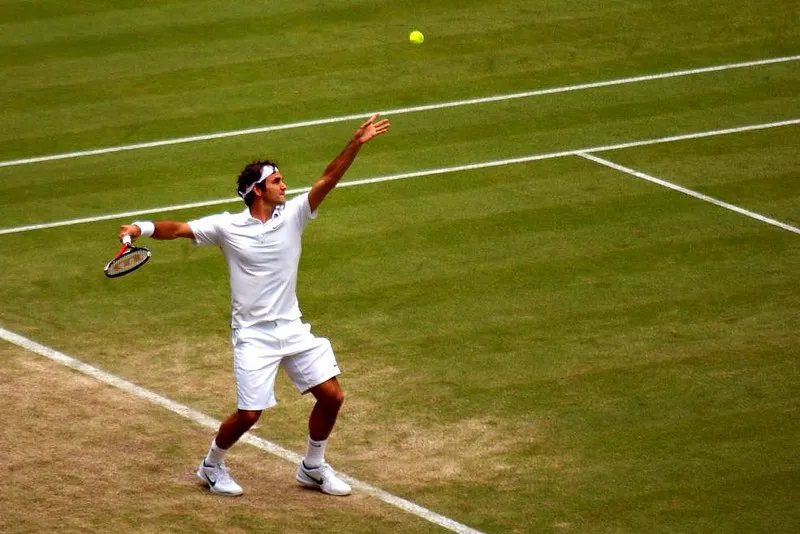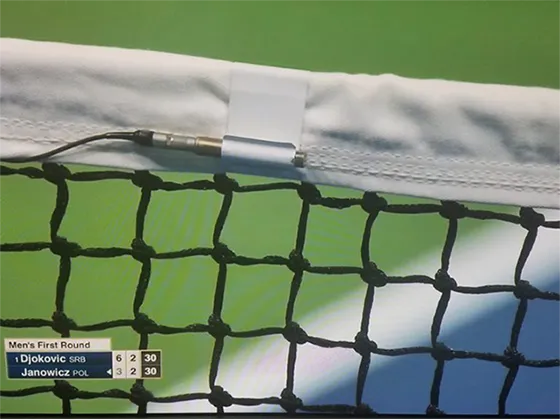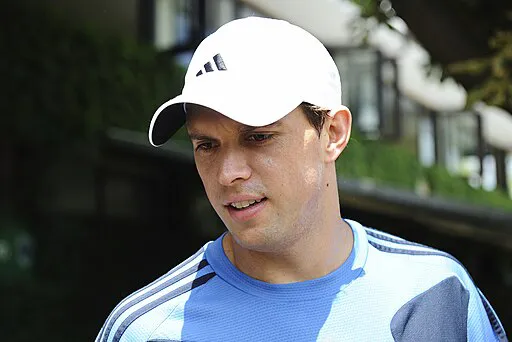Tennis Let – Critical 2024 ITF regulations

According to the International Tennis Federation ITF: Rules of Tennis 2024, a tennis let can occur in service or in-play. So what is a tennis let?
What is a tennis let?
In tennis, a “let” refers to a situation where a point is replayed due to specific circumstances that temporarily disrupt the play. Here are the primary scenarios where a let occurs:
Service Let
We can distinguish two kinds of tennis let:
- If the server’s ball touches the net during a serve but lands in the correct service box, it’s called a let.
- The ball is served when the receiver is not ready.
In the case of a service let, that specific serve will not count, and the server will serve a 1st serve again, However, a service let doesn’t cancel a previous fault.
Interference Let
If an external factor interferes with the match, such as a ball rolling onto the court from another court (or ball kids), a let may be called.
Similarly, if a player is distracted by something outside the match, such as a loud noise, the umpire might call a let to replay the point.
In each case, when a let is called, the point is replayed as if it never happened. This ensures that players are not unfairly penalized for situations beyond their control and maintains the integrity and fairness of the game.
In every case, when a tennis let is called, except when a service let is called on the 2nd service, the whole point will be replayed.
For example:
Origins of the term “let”
The term “let” in tennis has its origins in Old English and Middle English, where it originally meant “to hinder” or “to delay”.
Whilst some think this word has French origins since tennis (“Jeu de Paume“) was played in the 12th century by French monks. So we could easily relate the 3 letters in the word in French “FILLET” with LET, and “fillet” means net.
Exceptions of tennis let:
Tennis Let during a rally “NetCord Winner”:
A let that occurs during a rally in tennis is relatively rare but can happen in specific circumstances.
So when are you in the middle of a point (Not a service), and the ball hits the net (strap or band) and then goes into the court, well that’s a live ball. And you can’t replay the ball.
If it double bounces, then it’s just bad luck, and unfortunate. That’s why the majority of players who win this kind of point, usually raise their hand in a way to express that they are sorry for how this point has gone.
A ball that falls out of a player’s pocket
When you’re in a mid-rally point, and a ball falls out of your pocket, you get the blame for it, because it’s your responsibility. The same thing applies to the hat or tennis headband.
Therefore, the chair umpire or the opponent might call it a hindrance (immediately). And this is not a tennis let.
Be careful not to mix this with the tennis hindrance rule.
“No-Let” service rule
This rule consists of playing a match without the “Service Let” rule.
This rule is more commonly observed in recreational or amateur tennis settings rather than professional tournaments.
In tennis matches where the “no-let” rule applies, if a player’s serve hits the net cord but still lands in the correct service box, the serve is considered “good”, and the point continues.
We give this example when this rule was applied in 2018 at an ITF Junior competition:
The purpose of the no-let rule is:
- To encourage servers to hit more aggressive serves without worrying about the possibility of lets.
- Promotes a faster-paced game and reduces interruptions caused by lets during serves.
In professional tennis tournaments and matches governed by official rules, the standard let rule applies, allowing players to replay points if their serves touch the net cord and land in the correct service box.
How a service let is detected?
For many years, the tennis let has been detected by a “‘net judge” who lays a finger on the net strap to feel if there was a touch on the net. But, nowadays there are better sophisticated technologies to determine the tennis let.
Wimbledon introduced a net cord sensor back in 1974, craftily adapting the pick-up from an electric guitar to capture vibrations but despite
Tennis net cord sensor
This technology was first introduced in Wimbledon in 1974. it consists of using at each end of the net, two sensors capable of detecting vibrations are strategically positioned.
This little machine called ” Trinity”, is linked via a cord to a compact box held by the Chair umpire.

Before each serve, the umpire activates the device. When a serve touches the top of the net, the device emits a distinct beep, alerting the officials and players to a potential service let.
Visual Observation
The umpire or line judge observes the trajectory of the serve as it is struck by the server. If the ball touches the net and lands in the correct service box, it is considered a let.
Officials need to be attentive and observant to detect and correctly identify service lets to ensure fair play and uphold the integrity of the game.
How many tennis lets are permitted in a tennis match?
In tennis matches, there isn’t a specific limit to the number of tennis lets that are allowed.
The number of tennis lets that occur during a match can vary widely depending on factors such as player skill, court conditions, and the level of officiating.
We can give this example of Berritini hitting 4 lets in a row!!
It’s essential to note that while there is no limit to the number of tennis lets allowed in a tennis match, officials and players aim to minimize interruptions and ensure that play proceeds as smoothly as possible within the rules and regulations of the game.
Should you apologize after a NetCord winner?
Apologizing after hitting a netcord winner in tennis is generally considered a matter of personal sportsmanship and etiquette. While there is no strict rule requiring players to apologize for such shots, many players choose to do so as a gesture of fair play and respect for their opponent.
What do think elite players about apologizing in tennis?
According to USA TODAY, these are some thoughts on the net cord apology:

–Bob Bryan: “You’re never sorry…You’re actually kind of elated that you got the luck.”
–Roger Federer says it can be overwrought, doesn’t always do it, and admits he sometimes mocks the custom in practice. “Oh, I’m so sorry man, I hit that net cord,” the Swiss laughed when describing the fake apologies he issues in training.
In matches, Federer says he communicates contrition with a stare before the next point – “eye contact and a little gesture, tiny, but the opponent knows I meant it,” he says.
–Fabio Fognini: “I do it most of the time because it’s normal”
–Wozniacki: “It’s an unspoken rule… Tennis is a fair-play game just like golf.”
–Ana Konjuh: “Since I was young they told me to do it,”
–Mary Carillo: “It’s a total scam,”
–Bud Collins: “You know, Jolly Good Sport’ and all that,”
